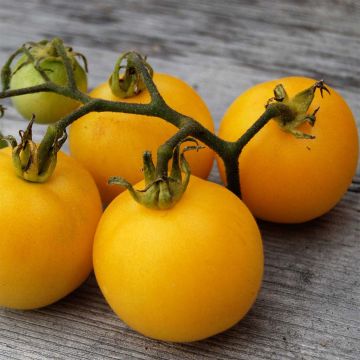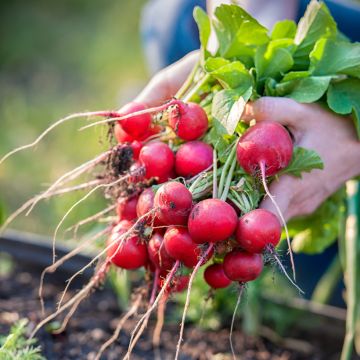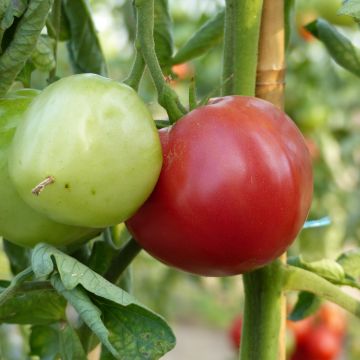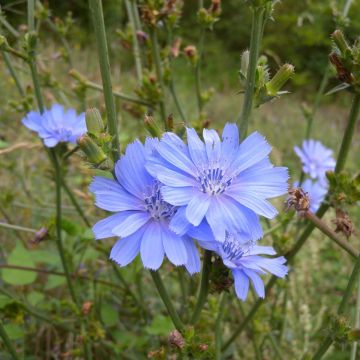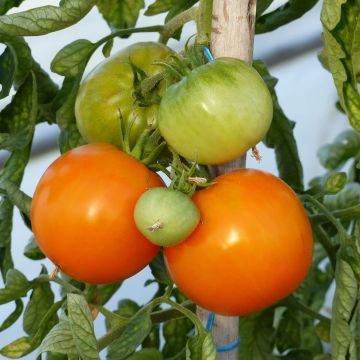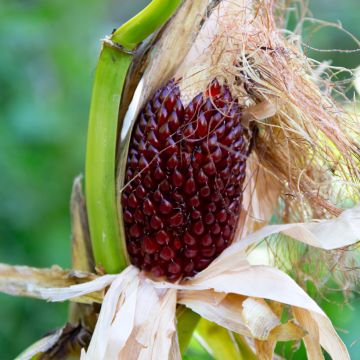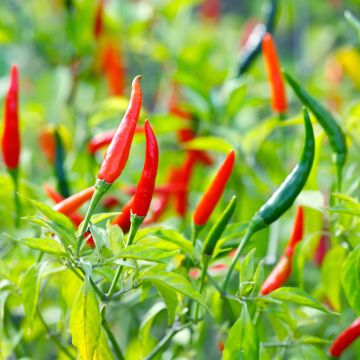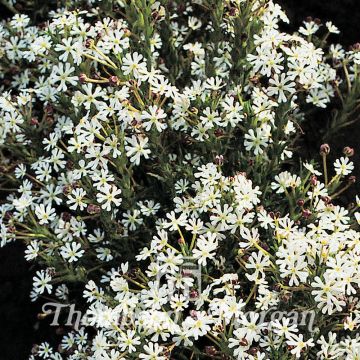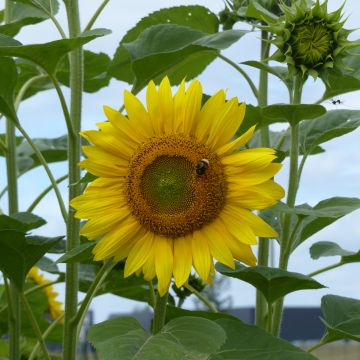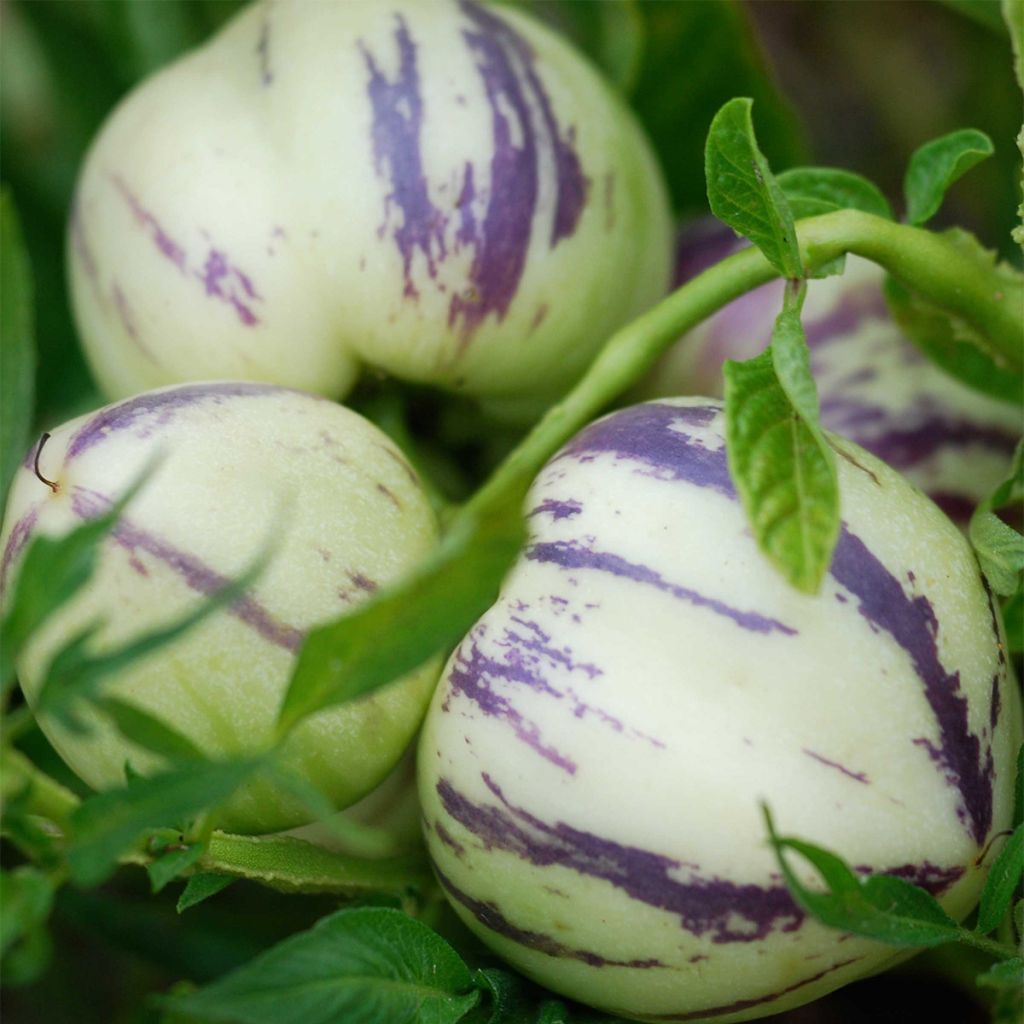

Poire-Melon Pepino NT - Ferme de Sainte Marthe


Poire-Melon Pepino NT - Ferme de Sainte Marthe
Pepino Melon-Pear NT
Solanum muricatum
Pepino, Pepino dulce, Melon pear
No production. However, all the young plants in buckets are currently being produced.
Nathalie F., 13/11/2020
This item cannot be shipped to the selected country
Dispatch by letter from €3.90
More information
Schedule delivery date,
and select date in basket
This plant carries a 6 months recovery warranty
More information
We guarantee the quality of our plants for a full growing cycle, and will replace at our expense any plant that fails to recover under normal climatic and planting conditions.
Seed-only orders are dispatched by sealed envelope. The delivery charge for seed-only orders is €3.90.
Description
The Melon Pear, also known as Pepino, is a vigorous vegetable plant that produces juicy fruits with a flavour that lies, as you may have guessed, between a pear and a melon. It is a surprising plant, still not widely cultivated, perhaps because it requires warmth, which will delight enthusiasts of exotic flavors. It is sown from March to May for a harvest in late summer.
Originating from South America and belonging to the Solanaceae family (like tomatoes), the Melon Pear (in Latin, Solanum muricatum) is a perennial plant generally cultivated as an annual in European climates. Vigorous, it forms a good metre-tall plant, branched from its base and adorned with vibrant green foliage, composed of lanceolate leaves. Its flowering occurs in summer in the form of white star-shaped flowers, marked with violet and punctuated with prominent yellow anthers.
The fruits of the Pepino appear in late summer / early autumn. They are ovoid, cream-coloured with a hint of yellow and striated with violet, sometimes reaching 1 kg. Their flavour is pleasant but unique, slightly acidic, resembling that of a pear and its texture reminiscent of a melon. These fruits are rich in vitamin C, and can be consumed raw or cooked, in compotes, pies or jams.
In the garden, the Melon Pear thrives in the sun or under light shade, in a location sheltered from cold winds. It is cultivated in rich and well-drained soil. Its cultivation is no more difficult than that of tomatoes, but it requires plenty of warmth and regular watering to develop satisfactorily. It will thrive in open ground in warm southern regions but elsewhere, it will benefit from being sheltered by a greenhouse or tunnel.
The Pepino is not hardy, if you wish to cultivate it as a perennial, you will need to plant it in a pot and overwinter it in a heated shelter, at a temperature equal to or above 5°.
Harvest: The harvest is carried out when the fruits reach ripeness, they then turn a yellowish colour. If weather conditions do not allow ripening on the plant, it can be done indoors in a warm place.
Storage: The fruits can be stored for several weeks in a cool place.
Gardener's tip: Like tomatoes, the Melon Pear can be susceptible to powdery mildew, so be careful not to wet its foliage when watering.
The untreated or "NT" seeds come from plants cultivated conventionally (often with the use of pesticides), however they undergo no treatment after harvest. These seeds are allowed in organic market gardening when organic seeds are out of stock.
Report an error about the product description
Harvest
Plant habit
Foliage
Botanical data
Solanum
muricatum
Solanaceae
Pepino, Pepino dulce, Melon pear
South America
Perennial
Other Vegetable seeds from A to Z
Planting and care
The Melon Pear is sown and cultivated like the tomato.
Sowing: The Melon Pear is sown from March to May, either in a seed tray or directly in a pot filled with good seed compost, at a temperature of 20°. Cover with plastic film to speed up germination, which usually takes between 5 and 10 days. When the plants are well-developed, you may need to transplant them into pots or directly into the garden, once the risk of frost has passed. Remember to gradually acclimatise your plants to cooler temperatures.
The recommended spacing between each plant is 50 cm (20in) in all directions.
Cultivation: The Melon Pear thrives in full sun or light shade, in a sheltered spot away from cold winds. It grows best in rich, well-drained soil. It requires plenty of warmth and regular watering to develop satisfactorily.
Some gardeners stake it and prune it to promote larger fruit size at the expense of quantity, while others let it grow freely - the choice is yours!
Seedlings
Care
Intended location
-
, onOrder confirmed
Reply from on Promesse de fleurs
Vegetable seeds
Haven't found what you were looking for?
Hardiness is the lowest winter temperature a plant can endure without suffering serious damage or even dying. However, hardiness is affected by location (a sheltered area, such as a patio), protection (winter cover) and soil type (hardiness is improved by well-drained soil).

Photo Sharing Terms & Conditions
In order to encourage gardeners to interact and share their experiences, Promesse de fleurs offers various media enabling content to be uploaded onto its Site - in particular via the ‘Photo sharing’ module.
The User agrees to refrain from:
- Posting any content that is illegal, prejudicial, insulting, racist, inciteful to hatred, revisionist, contrary to public decency, that infringes on privacy or on the privacy rights of third parties, in particular the publicity rights of persons and goods, intellectual property rights, or the right to privacy.
- Submitting content on behalf of a third party;
- Impersonate the identity of a third party and/or publish any personal information about a third party;
In general, the User undertakes to refrain from any unethical behaviour.
All Content (in particular text, comments, files, images, photos, videos, creative works, etc.), which may be subject to property or intellectual property rights, image or other private rights, shall remain the property of the User, subject to the limited rights granted by the terms of the licence granted by Promesse de fleurs as stated below. Users are at liberty to publish or not to publish such Content on the Site, notably via the ‘Photo Sharing’ facility, and accept that this Content shall be made public and freely accessible, notably on the Internet.
Users further acknowledge, undertake to have ,and guarantee that they hold all necessary rights and permissions to publish such material on the Site, in particular with regard to the legislation in force pertaining to any privacy, property, intellectual property, image, or contractual rights, or rights of any other nature. By publishing such Content on the Site, Users acknowledge accepting full liability as publishers of the Content within the meaning of the law, and grant Promesse de fleurs, free of charge, an inclusive, worldwide licence for the said Content for the entire duration of its publication, including all reproduction, representation, up/downloading, displaying, performing, transmission, and storage rights.
Users also grant permission for their name to be linked to the Content and accept that this link may not always be made available.
By engaging in posting material, Users consent to their Content becoming automatically accessible on the Internet, in particular on other sites and/or blogs and/or web pages of the Promesse de fleurs site, including in particular social pages and the Promesse de fleurs catalogue.
Users may secure the removal of entrusted content free of charge by issuing a simple request via our contact form.
The flowering period indicated on our website applies to countries and regions located in USDA zone 8 (France, the United Kingdom, Ireland, the Netherlands, etc.)
It will vary according to where you live:
- In zones 9 to 10 (Italy, Spain, Greece, etc.), flowering will occur about 2 to 4 weeks earlier.
- In zones 6 to 7 (Germany, Poland, Slovenia, and lower mountainous regions), flowering will be delayed by 2 to 3 weeks.
- In zone 5 (Central Europe, Scandinavia), blooming will be delayed by 3 to 5 weeks.
In temperate climates, pruning of spring-flowering shrubs (forsythia, spireas, etc.) should be done just after flowering.
Pruning of summer-flowering shrubs (Indian Lilac, Perovskia, etc.) can be done in winter or spring.
In cold regions as well as with frost-sensitive plants, avoid pruning too early when severe frosts may still occur.
The planting period indicated on our website applies to countries and regions located in USDA zone 8 (France, United Kingdom, Ireland, Netherlands).
It will vary according to where you live:
- In Mediterranean zones (Marseille, Madrid, Milan, etc.), autumn and winter are the best planting periods.
- In continental zones (Strasbourg, Munich, Vienna, etc.), delay planting by 2 to 3 weeks in spring and bring it forward by 2 to 4 weeks in autumn.
- In mountainous regions (the Alps, Pyrenees, Carpathians, etc.), it is best to plant in late spring (May-June) or late summer (August-September).
The harvesting period indicated on our website applies to countries and regions in USDA zone 8 (France, England, Ireland, the Netherlands).
In colder areas (Scandinavia, Poland, Austria...) fruit and vegetable harvests are likely to be delayed by 3-4 weeks.
In warmer areas (Italy, Spain, Greece, etc.), harvesting will probably take place earlier, depending on weather conditions.
The sowing periods indicated on our website apply to countries and regions within USDA Zone 8 (France, UK, Ireland, Netherlands).
In colder areas (Scandinavia, Poland, Austria...), delay any outdoor sowing by 3-4 weeks, or sow under glass.
In warmer climes (Italy, Spain, Greece, etc.), bring outdoor sowing forward by a few weeks.




































